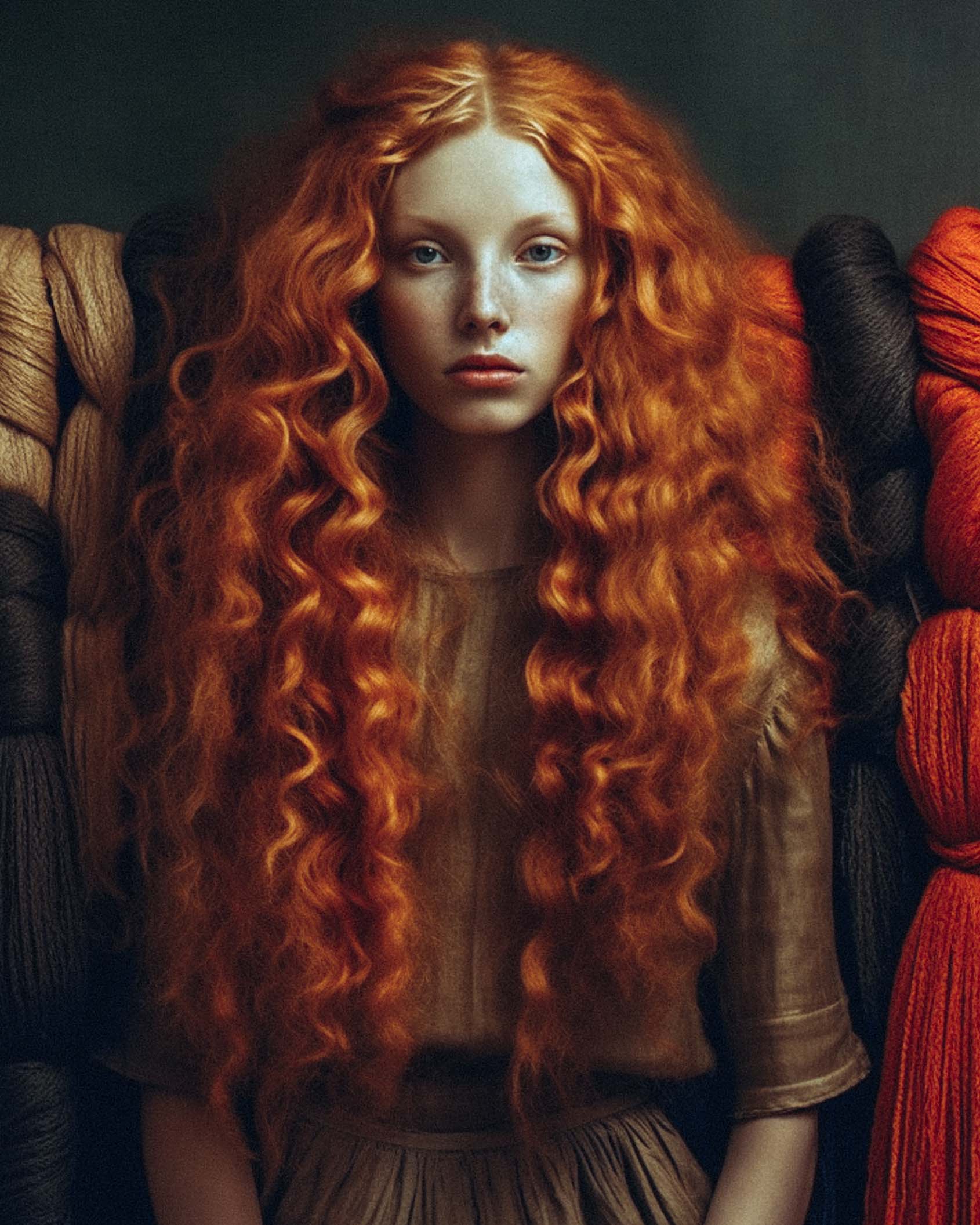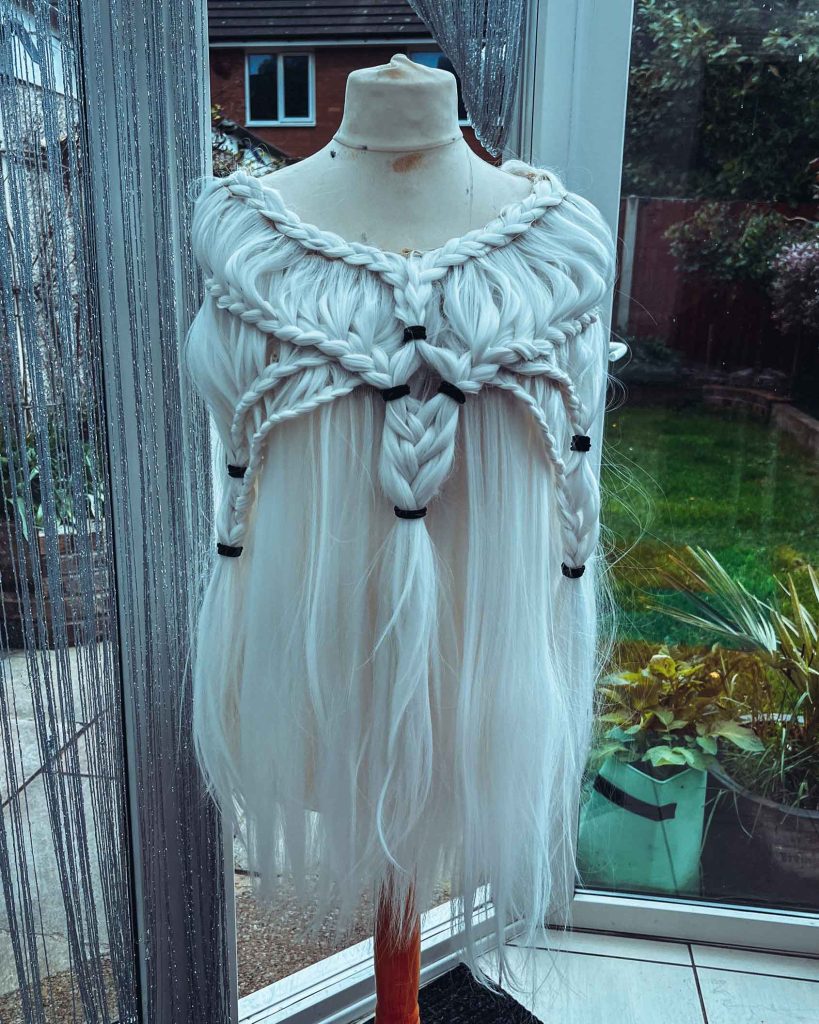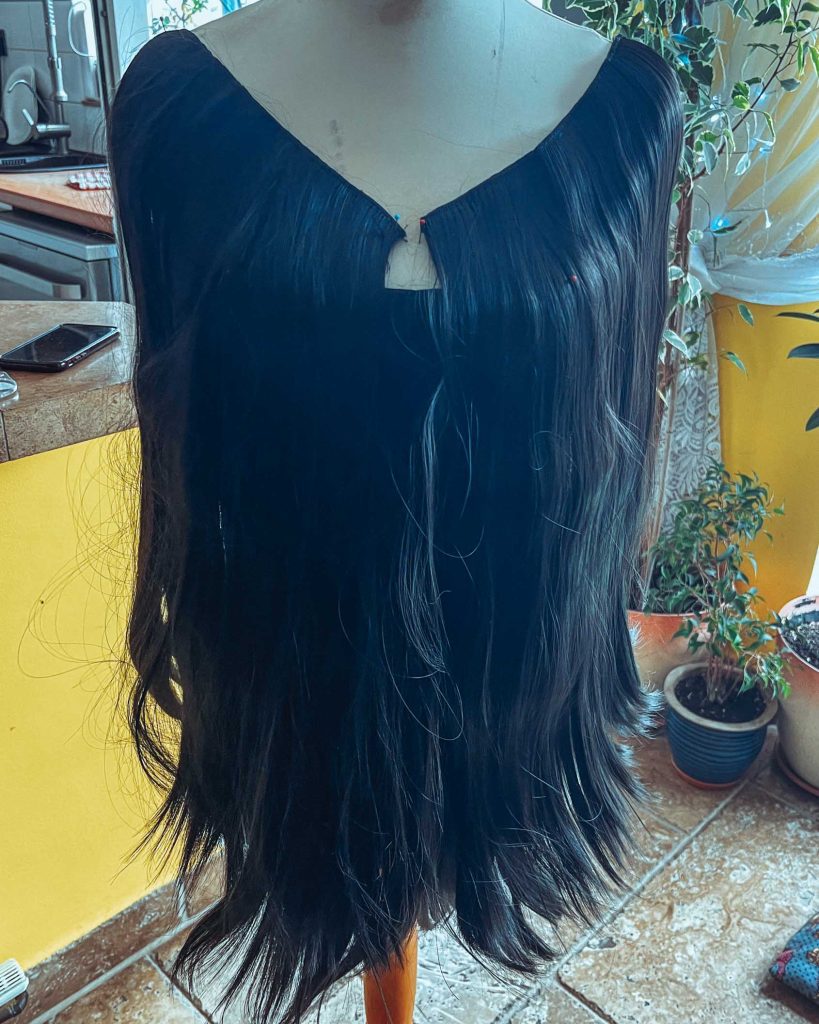
12 Apr Challenging Conventional Representations of Femininity
This is an exploration of the use of hair as an artistic medium to challenge conventional representations of femininity and beauty. Focusing on the creation of a dress made entirely from hair, this analysis examines how this unconventional medium can subvert societal expectations and present a new, empowering representation of the female form.
In societies across the globe, the female form has long been subject to societal expectations and constraints, with the definition of femininity often being tied to physical appearance. Hair, in particular, is seen as a potent symbol of feminine allure and power, and thus, it is frequently subjected to societal norms and expectations. This study focuses on the creation of a dress made entirely from hair as a medium to challenge these conventions, subvert societal norms, and provide a fresh representation of the female form.


Deconstructing Conventional Representations of Femininity
Femininity, as traditionally represented in media and society, often adheres to certain physical and behavioural norms. These societal expectations can be restrictive and may limit the diversity and complexity of women’s identities (Wolf, 1991). Hair, as a significant aspect of female appearance, is often a site of these expectations, with its length, colour, and style being associated with specific societal norms and standards (Weitz, 2004).
In creating a dress from hair, an artist has the opportunity to subvert these norms. The dress, as a symbol of femininity, can be seen as a reflection of societal expectations of women. However, by crafting it from hair, the artist uses a material that is intimately connected with the body and personal identity, thus challenging the traditional symbolism of the dress and offering a new interpretation of the female form (Skorek, 2023).
Hair as an Expressive Medium
Hair, as an artistic medium, holds a unique potential for expressing femininity in diverse and unconventional ways. It possesses a versatility that allows for various interpretations and representations, each strand carrying its own story and symbolic significance (Synnott, 1993).
In the context of the hair dress, the use of hair of varying colours and textures not only provides visual interest but also represents the diverse expressions of femininity present in our society. Each strand of hair weaves together a collective narrative that speaks to the timeless bond between women and their cultural heritage, breaking away from one-dimensional portrayals of femininity (Skorek, 2023).
Conclusion
The process of creating a dress from hair presents a powerful medium to challenge conventional representations of femininity and beauty. This artistic exploration demonstrates the potential to subvert societal norms and expectations, presenting hair as a versatile and expressive medium that can construct a fresh, empowering representation of the female form. This study underscores the power of artistry in reshaping societal perceptions, opening up new avenues for the expression and celebration of femininity.
References
Skorek, K. (2023). Reimagining Feminine Expression: Crafting a Dress from Hair as an Artistic Exploration of Polish Cultural Heritage.
Synnott, A. (1993). The Body Social: Symbolism, Self and Society. London: Routledge.
Weitz, R. (2004). Rapunzel’s Daughters: What Women’s Hair Tells Us About Women’s Lives. New York: Farrar, Straus and Giroux.
Wolf, N. (1991). The Beauty Myth: How Images of Beauty Are Used Against Women. New York: HarperCollins.

No Comments